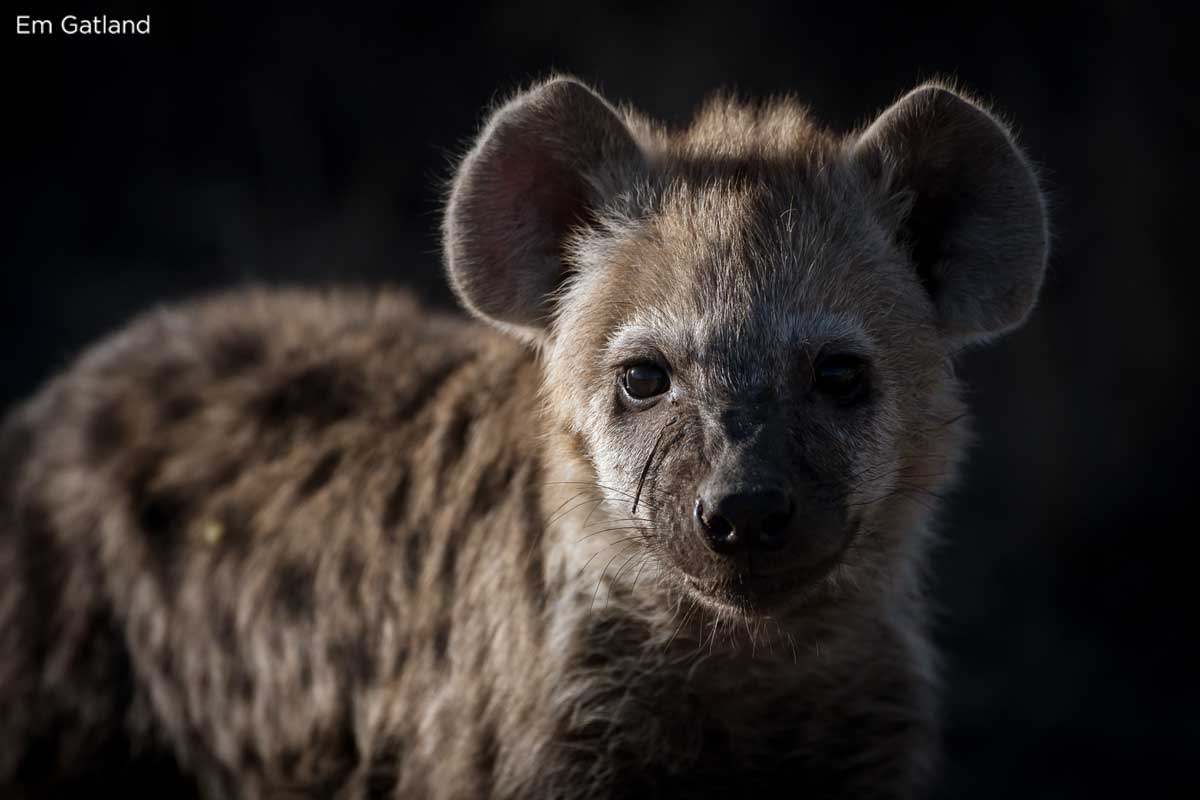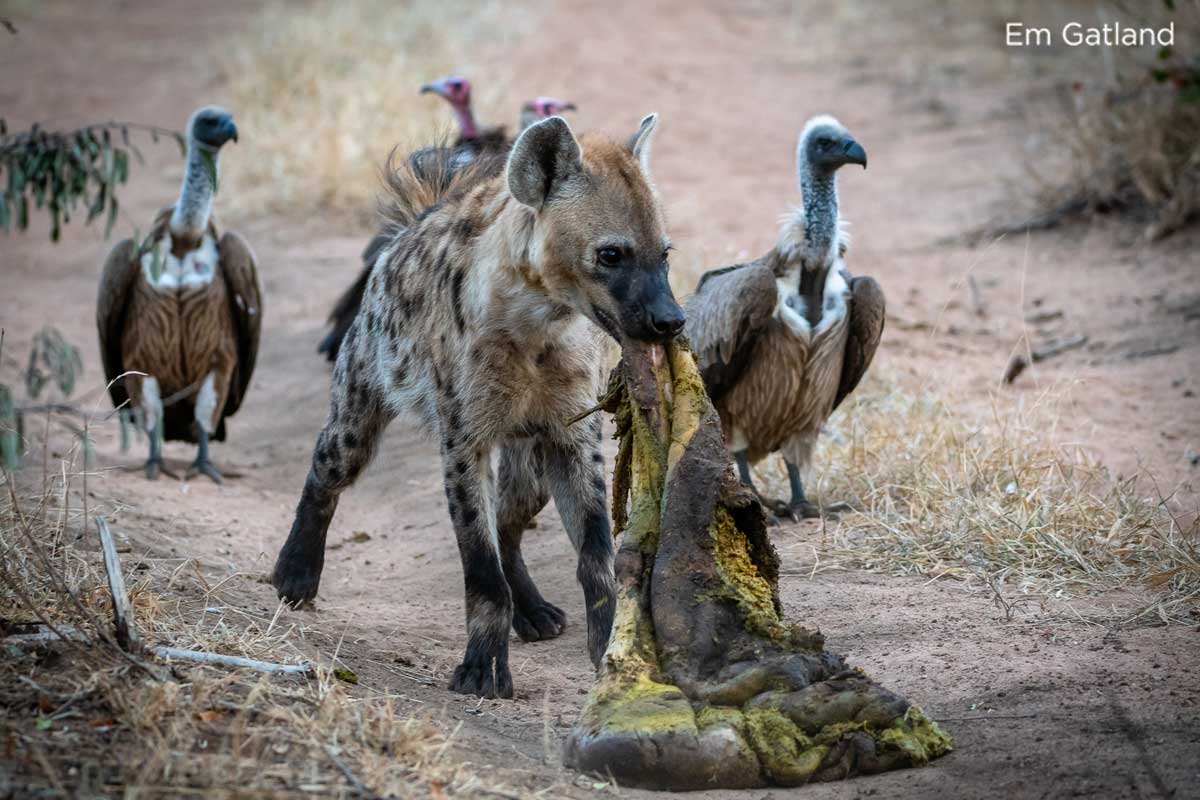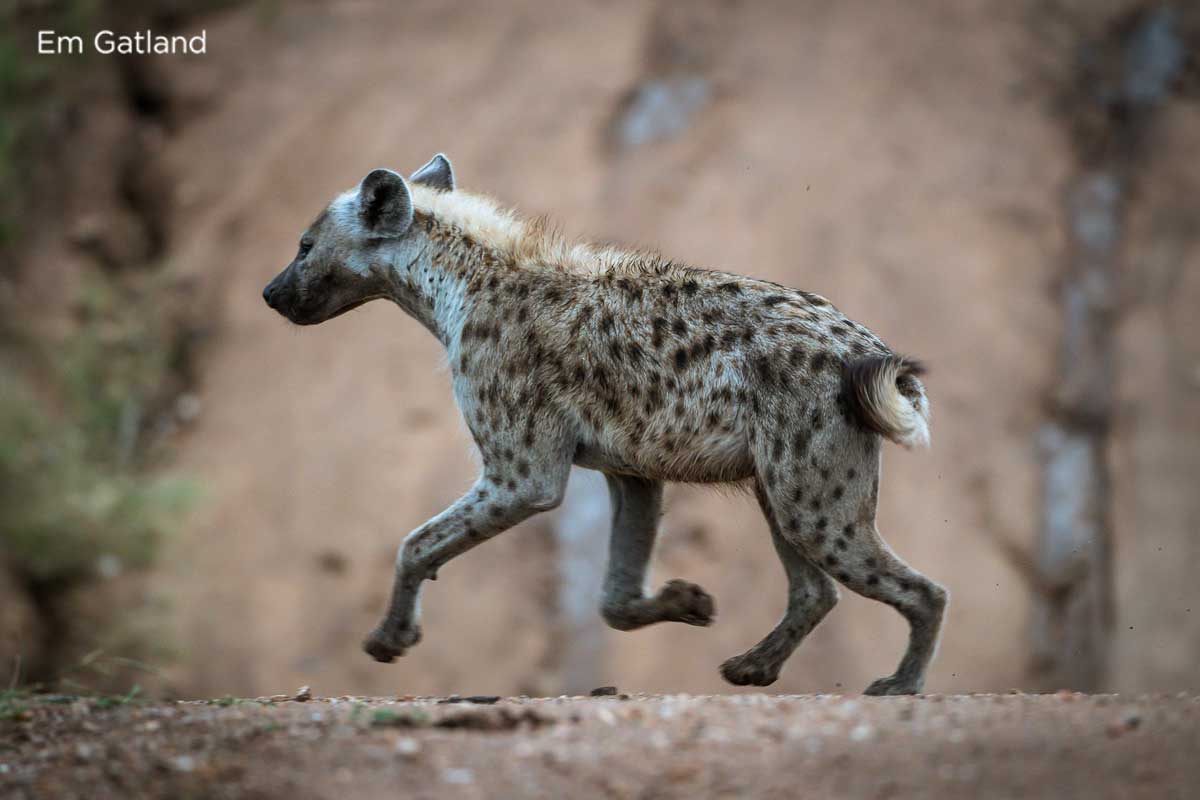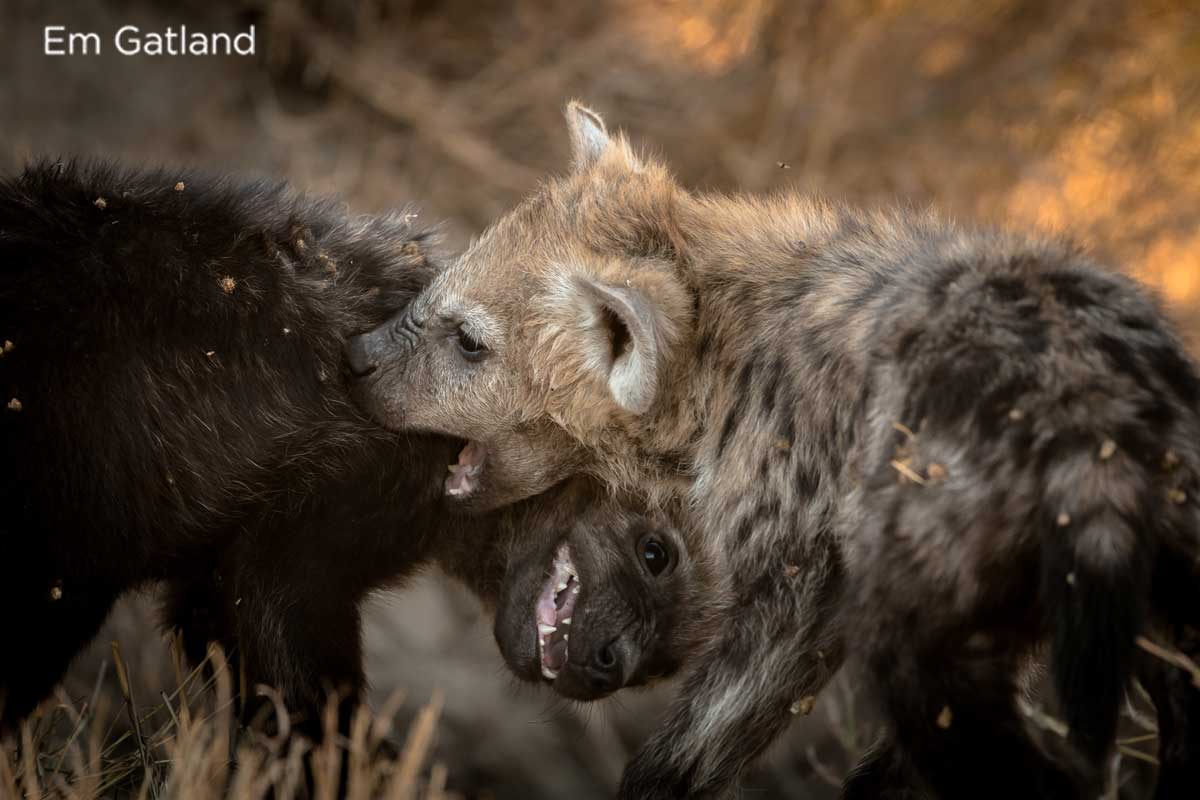The scavenging hyena is often cast as a villainous half-wit in literature and movies, giving it a bad reputation for being a good-for-nothing cackling thief. The hyena is said to embody all that is evil, and there are also many myths and legends associated with these creatures. It is falsely believed that hyena are cowards, but in actual fact they’re made for fierce competition in the wild and certainly aren’t afraid of their competitors.
With all wildlife, there is a reason for species-specific behaviour. And it’s our job to understand each species’ role in the wild.
Spotted hyena doesn’t do themselves any favours when they live up to their stereotype, but their role in the wild is vital. And spotting one loping across the road at night while you’re out on game drive is an exciting experience! Not only do hyena serve an important role in the wild, but they often lead guides and trackers to exciting predator sightings.
5 Interesting Facts About the Misunderstood Spotted Hyena :
- The hyena is the ultimate opportunist and constantly scours the bushveld for signs of recent kills. They listen intently for cries of prey being taken down by predators and head straight to the area in the hopes of finding a free meal. They steal from leopards and even attempt to displace lions from a kill. With their bone-crushing jaws, hyena will devour everything at a kill site (often with the help of vultures). They clean up all that is discarded by the big cats. If it weren’t for hyena we’d have graveyards of bones, decaying flesh and messy scenes littering the pristine bushveld. Ultimately, they are the janitors of the bushveld.
- Hyena has a digestive system of steel and simply aren’t affected by diseased flesh. If there is a diseased carcass littering the land, it will affect other scavengers and those that feast of the remains of the kill. Hyena actually prevents the spread of disease by eating contaminated carcasses.
- The familiar whooping sound that echoes through the night is one of the many vocalisations from a hyena. Another sound synonymous with a hyena is its high-pitched laughing cackle. Many people think that the sounds emitted from the hyena are quite menacing, but each of their 14 vocalisations is a method of communicating with their clan members. A hyena’s laughter is actually one of anxiety and fear. It’s a response to being attacked or chased from the kill site. And their series of grunts and groans form part of their unique greeting ceremony.
- Interestingly enough, the hyena isn’t related to cats or dogs, and are actually more closely related to civets and genets. This is quite confusing given that these creatures have a dog-like appearance and the females are referred to as bitches. Their young are called cubs, which would suggest a closer cat-like relation.
- Female hyena is the dominant leaders within clans. They are larger in size and more aggressive than their male counterparts. Females have a sort of pseudo-penis, which has a multi-functional purpose. This appendage is actually the birth canal, and they also urinate through this canal. Females normally give birth to 2 – 4 cubs, but tragically the firstborn cub often suffocates on the way out.
Hyena are one of the most fascinating creatures in the animal kingdom, and are certainly more than just carrion-eating scavenging scoundrels!






